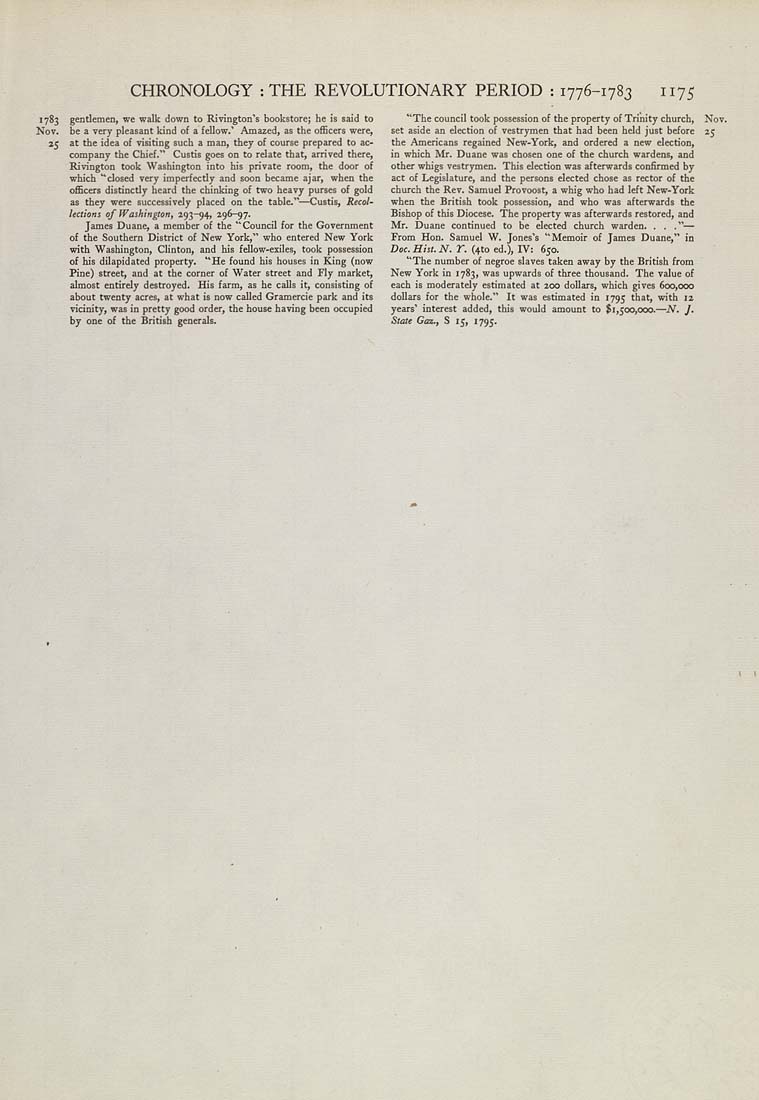CHRONOLOGY : THE REVOLUTIONARY PERIOD : 1776-1783 1175
1783 gentlemen, we walk down to Rivington's bookstore; be is said to "The council took possession of the property ot Trinity church, Nov
Nov. be a very pleasant kind of a fellow.' Amazed, as the officers were, set aside ao election ot vestrymen that had been held just before 15
25 at the idea of visiting such a raan, they of course prepared to ac- the Americans regained New-York, and ordered a new election,
corapany the Chief." Custis goes on to rdate that, arrived there, in which Mr, Duane was chosen one of the church wardens, and
Rivington took Washington into his private room, the door of other whigs vestryraen. This dection was afterwards confirmed by
which "dosed very imperfectly and soon became ajar, when the act of Legislature, and the persons elected chose as rector of tbe
officers distinctiy heard the chinking of two heavy purses of gold church the Rev. Saraud Provoost, a whig who had left New-York
as they were successively placed on the table."—Custis, Recol- when the British took possession, and who was afterwards the
lections of Washington, 293-94, 296-97. Bishop of this Diocese. The property was afterwards restored, and
Jaraes Duane, a raeraber ot tbe "Counril for the Government Mr. Duane continued to be elected church warden, . . ."—
of tbe Southern District of New York," who entered New York Frora Hon. Sarauel W. Jones's "Meraoir ot James Duane," in
with Washington, Clinton, and his fdlow-exiles, took possession Dec Hist. N. Y. (4to ed.), IV; 650,
of his dilapidated property. "He found his houses in King (now "The number ot negroe slaves taken away by the British from
Pine) street, and at the corner of Water street and Fly market. New York in 1783, was upwards of three thousand. The value ot
draost entirdy destroyed. His farm, as he calls it, conristlng of each is moderately estimated at zcra dollars, which gives 600,000
about twenty acres, at what is now cdled Gramercie park and Its dollars for the whole." It was estimated in 1795 'hat, with 12
viciiuty, was in pretty good order, the house having been occupied years' interest added, this would araount to £1,500,000.—N. J.
by one of the British generals. Slate Gaz,, S 15, 1795.
|








